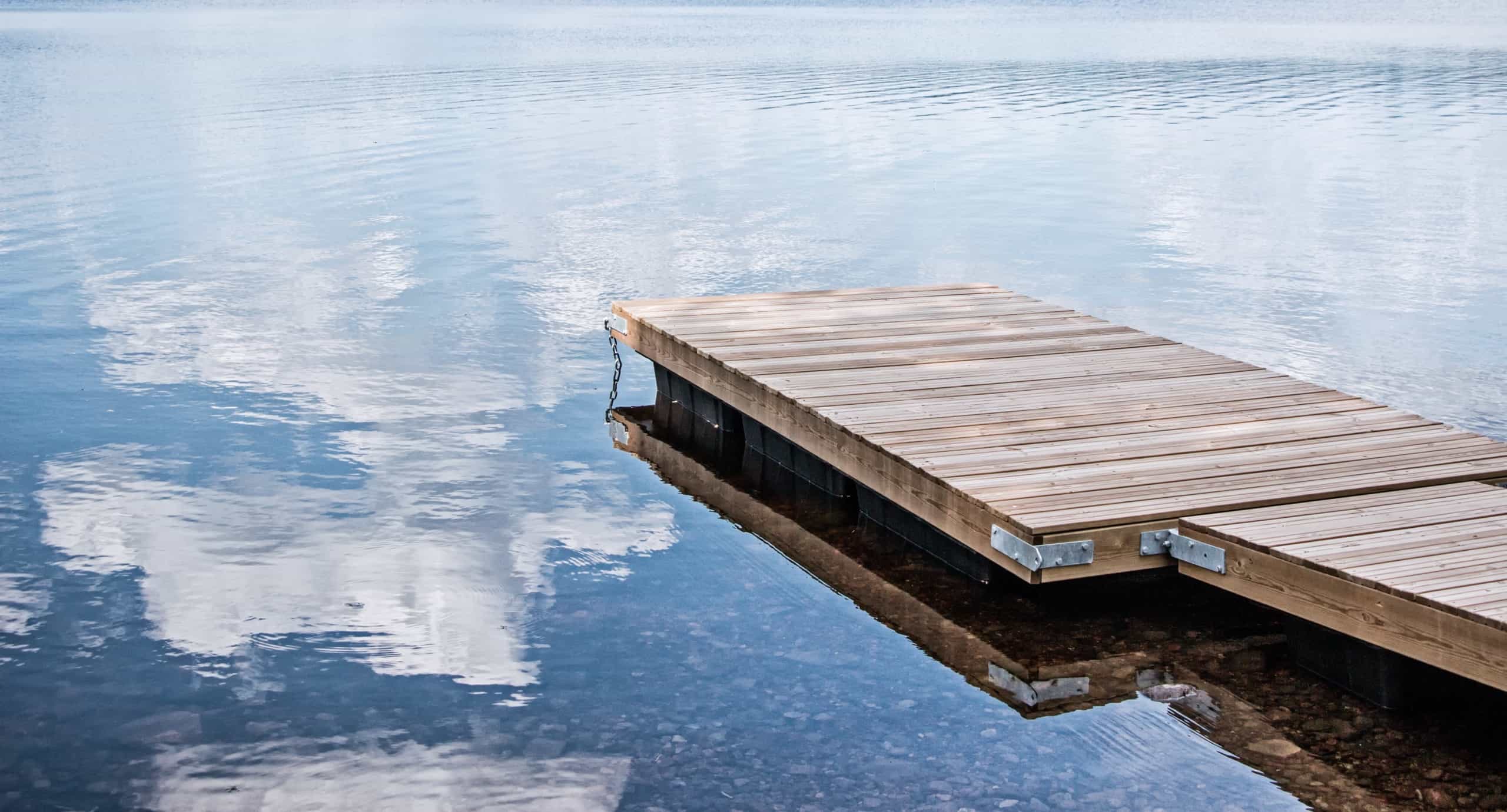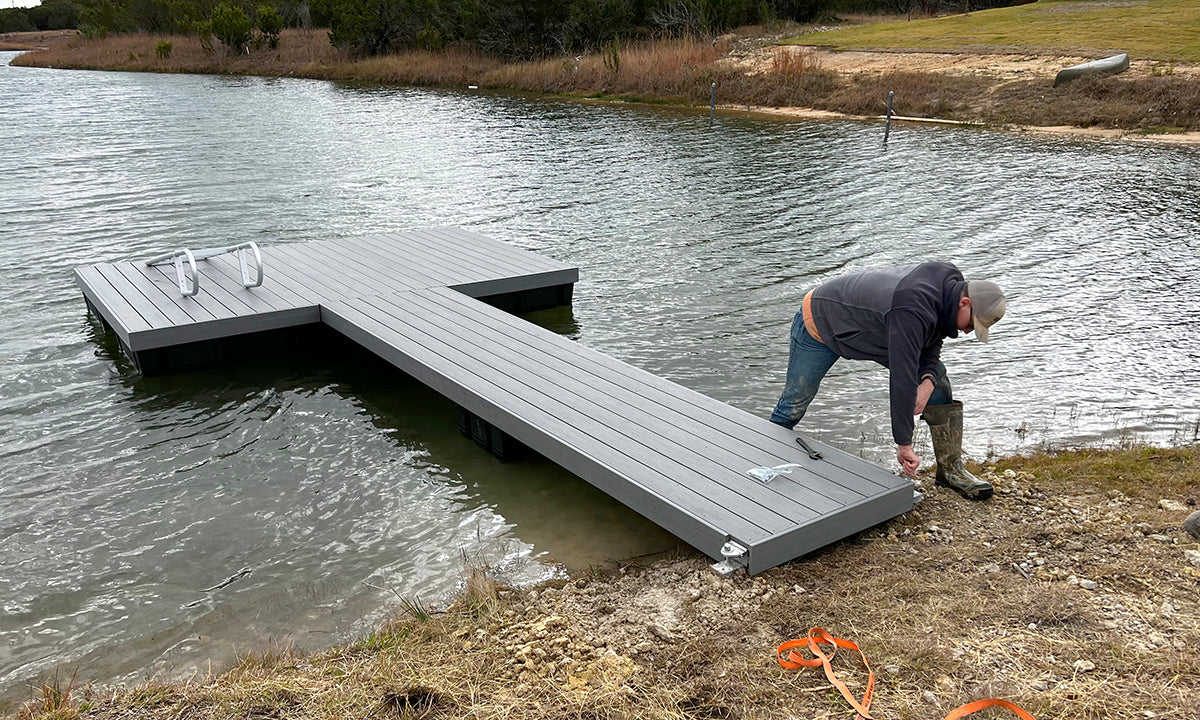Optimizing Your Outdoor Room with Specialized Floating Dock Solutions
Wiki Article
Create the Perfect Docking Service With Floating Docks
Floating docks existing a functional solution for a variety of maritime needs, adapting perfectly to rising and fall water degrees and diverse vessel kinds. Their modular nature enables for quick setup and relocation, yet the option of ideal products and layout attributes is critical for ensuring both functionality and aesthetic allure. As we discover the crucial components that add to the efficiency of floating docks, a number of essential elements concerning stability and upkeep will certainly arise, questioning about how to maximize your docking experience. The succeeding discussion will brighten these crucial considerations.
Advantages of Floating Docks
Floating docks deal numerous benefits that make them an excellent selection for numerous maritime applications. Unlike fixed docks, floating docks surge and fall with the tide, guaranteeing regular availability for vessels.Furthermore, floating docks are generally much easier and quicker to set up compared to typical fixed structures. Their modular layout permits for simple assembly and disassembly, facilitating maintenance and moving when needed. This versatility is especially beneficial for short-lived applications or in atmospheres where conditions might alter.
Floating docks also often tend to be a lot more eco-friendly, as they lessen disruption to the seabed and bordering aquatic ecosystems. Their resilient nature decreases the threat of damage to aquatic life, promoting a much healthier environment. These docks can be tailored to fit numerous vessel sizes, making sure that they meet details functional needs.
Inevitably, the combination of versatility, convenience of installation, and environmental factors to consider makes floating docks a highly efficient remedy for a large range of maritime demands.
Choosing the Right Products
Selecting the proper products for floating docks is vital to ensure durability, stability, and durability. The choice of materials directly impacts the dock's performance in different environmental conditions, including exposure to water, sunlight, and potential wear from marine traffic.Common materials used for floating docks consist of light weight aluminum, timber, and high-density polyethylene (HDPE) Light weight aluminum is light-weight, corrosion-resistant, and calls for marginal upkeep, making it an exceptional option for durability. Its preliminary expense can be higher contrasted to other products.
Timber, while visually attractive and offering a conventional look, can be susceptible to rot and insect damage otherwise correctly treated. Using pressure-treated timber or normally resilient species like cedar or redwood can mitigate these concerns.
HDPE is a prominent choice as a result of its resistance to UV rays and chemicals, in addition to being ecologically friendly. dock company. It is readily available and light-weight in various shades, permitting customization
Ultimately, the appropriate product choice will certainly depend upon specific demands, including spending plan, desired visual appeals, and environmental considerations. Careful analysis of these elements will certainly result in a effective and resilient floating dock solution.
Style Considerations for Stability
When creating floating docks, ensuring stability is a fundamental aspect that can substantially influence their functionality and safety. Stability in floating dock design is influenced by various elements, including buoyancy, weight distribution, and the plan of elements.Weight distribution is vital; equally dispersing lots throughout the dock protects against turning and improves stability. This can be accomplished with tactical placement of docking equipment, such as cleats and fenders, as well as proper spacing of floats. In addition, the dimensions of the dock ought to be thoughtfully planned. Wider designs can supply raised security, especially in rough water conditions, while longer docks might need additional assistances to stop sagging.
Another vital factor to consider is the environmental influence, consisting of wave activity and wind. Integrating features such as sidewalls or skirting can aid reduce the effects of ecological forces, preserving security in adverse problems. Ultimately, a mix of thoughtful style, product choice, and understanding of ecological elements will certainly produce a drifting dock that meets both security and safety needs.
Installation Tips and Methods

Next, secure the necessary permits and follow local regulations, which might determine setup techniques and environmental considerations. If required, involve a certified specialist experienced in floating dock installations. Usage top notch products developed for marine settings to improve toughness and durability.
When placing the dock, straighten it alongside the coastline to assist in simple access. Make certain that the anchoring system is durable, utilizing concrete blocks or helical supports to support the dock against wind and wave activity. It's important to look at here now represent seasonal water level variations, including possible ice activity in chillier climates.
Throughout the setup, double-check the dock's floatation and security before wrapping up the anchoring. On a regular basis evaluate the installment for any type of indicators of wear or damage. By following these techniques and ideas, you can accomplish a secure, practical, and aesthetically pleasing floating dock installment that meets your requirements.
Maintenance and Treatment Standards
Maintaining and caring for floating docks is critical to prolonging their life expectancy and making sure secure usage. Regular assessments need to this link be performed to identify any indications of wear, damages, or aquatic development. Try to find splits, loosened installations, or discolored areas on the dock's surface, as these issues can compromise structural integrity.Cleaning is important. Utilize a pressure washer to remove algae, barnacles, and debris, which can build up gradually. For persistent development, consider eco-friendly cleaner that will not hurt water life.
Furthermore, inspect the mooring lines and anchors often to ensure they are secure and free from corrosion. Replace any type of frayed or harmed lines promptly to maintain stability.
Throughout severe weather, such as storms or freezing conditions, take precautionary measures. Protect the dock with extra mooring lines and, if possible, remove any kind of removable elements to avoid damage.
Verdict
In final thought, the execution of floating docks offers a efficient and flexible docking remedy suitable for different maritime applications. With correct installation and routine maintenance, floating docks can supply effective and trustworthy docking experiences for a large variety of vessels.As we explore the vital components that contribute to the efficiency of floating docks, numerous key aspects concerning security and upkeep will emerge, increasing inquiries concerning how to optimize your docking experience. Unlike taken care of docks, floating docks surge and fall with the tide, guaranteeing constant availability for vessels.When making floating docks, ensuring stability is a fundamental aspect that can substantially influence their capability and safety and security. Security in floating dock layout is affected by numerous variables, consisting of buoyancy, weight circulation, and the setup of parts. Inevitably, a mix of thoughtful layout, product choice, and understanding of ecological aspects will certainly produce a floating dock that top article satisfies both stability and safety requirements.
Report this wiki page